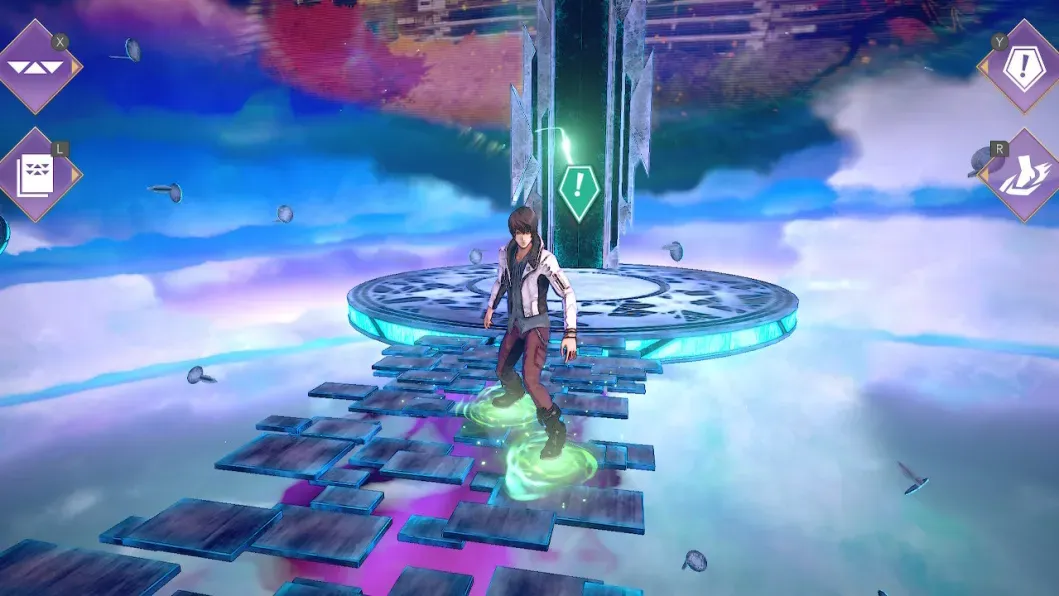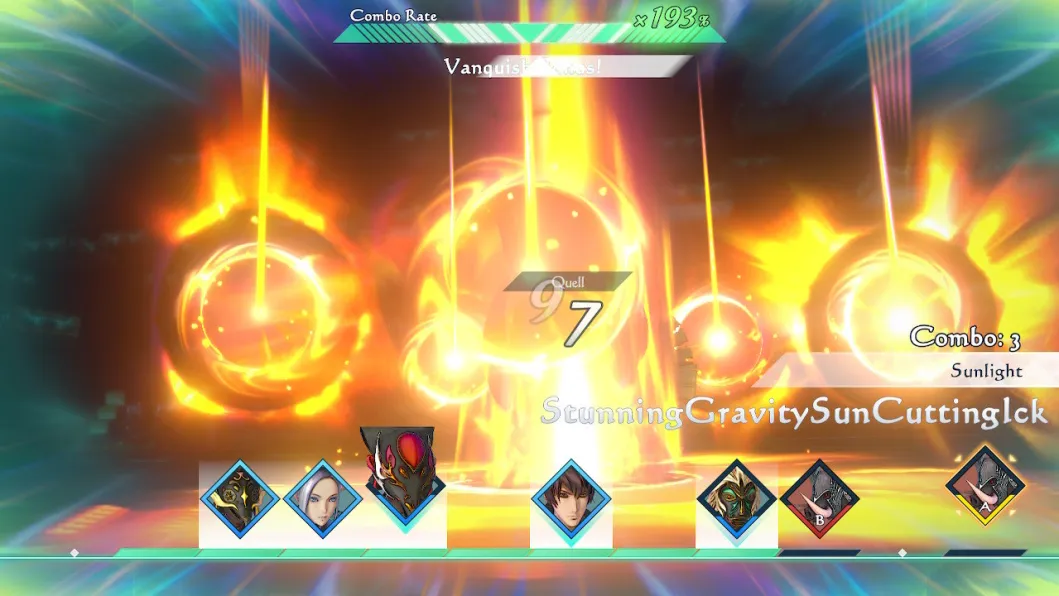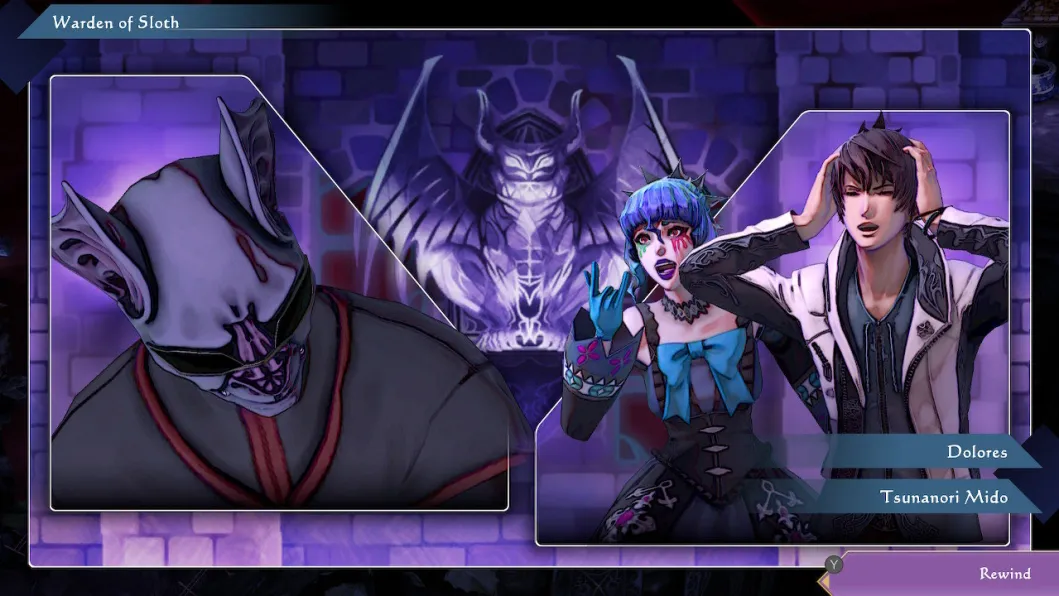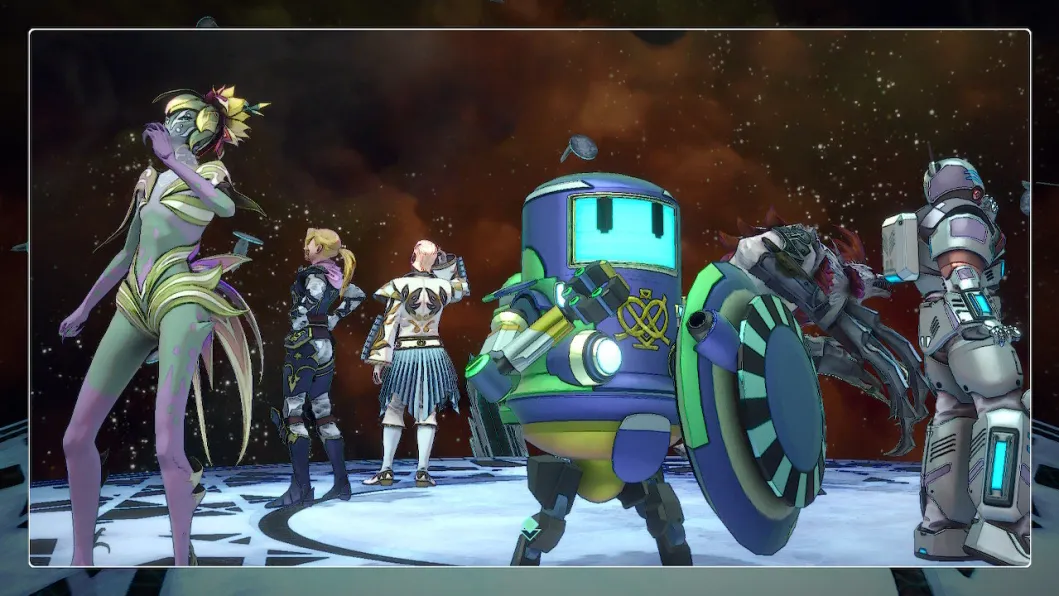
SaGa has been around since 1989, having released 15 titles as of writing this. We’ve seen this game on almost every platform since then, with Emerald Beyond being the newest in the line coming out on multiple platforms including the Nintendo Switch. This is the first in the SaGa series I have played, and it was a fun introduction to the world(s) with what feels like a culmination of many systems from past games. Let’s jump in and see what SaGa: Emerald Beyond has in store…

SaGa is an RPG, which might make you think you need to have played the past games to understand the world, but it’s a fully standalone set of stories. In SaGa Emerald Beyond, you’ll have access to five different characters with different stories but similar ways of playing. Tsunanori Mido seems to be the “main character”, as almost every tutorial that pops up features him as the example character. He’s a member of a famous family known for their control of Puppets (which count as companions in his quest). Bonnie and Formina are officers for the CCPD and you’ll have two main characters for that playthrough. Diva No. 5, who is a songstress and that’s all I can say without giving things away. Siugnas is a vampire lord and the style is unparalleled. Finally, there is the daughter of a legendary sage, Ameya Aisling. All five have different storylines and different companions, but the main missions are similar, as mentioned previously.

Without giving away too much plot (as I’ve been asked not to do), you’ll be teleporting to different worlds with different companions you can recruit and different enemies to fight. However, each time you play with a different character, it’s generally the same worlds with the same missions, only slightly flavored differently for each character. For instance (again without giving too much detail) you end up on a station where you meet a young scientist. In the Tsunanori Mido playthrough, you help her find her three cats for the experiment she’s doing that escaped. You go down to the basement and can either fight everything, or figure out the puzzle and just collect the cats and avoid fights that aren’t necessary. With Diva No. 5, you meet the same young scientist, but this time you help her fight off the fruits and vegetables that are alive and causing a fuss. So you go downstairs and can fight everything or only the ones that you HAVE to fight. So while there are five characters to play as, I found myself not as interested in playing the other characters for anything other than meeting the side characters for that main character’s story.

Speaking of side characters (especially with Tsunanori), I found I liked the side characters more than the main characters. I really loved Lita, Administrator, and Dolores much more than I liked Tsunanori. I don’t know that every player would feel the same, but for a main character that’s showcased all over the game (even in tutorials for other character storylines) he wasn’t very likable and the story isn’t long enough for him to have much character development.
When it comes to the length of the game, each character takes about 5 hours on average to beat. With five characters, your starting length is 25 hours. However, Emerald Beyond is big on replayability with its overworld mechanics. At times I felt like I had no idea what was going on and I would run to another area and fight some guys and progress and I just kept doing that until I beat the game. Missions are ranked by difficulty from easy to hard, but it didn’t seem to matter which missions I went on, I just kept progressing. So part of the fun of replaying became seeing if anything changed. While nothing drastic changed, there were just slight changes to the enemy type and difficulty of the enemies. For some, this will be a wonderful experience of figuring out how everything connects, but for me, it was fun just doing things and finding where it left me.

The music is something that really shines throughout the game. While some music played often (I’m looking at you battle music) the overworld music changes a lot and the different styles of music kept me going and grooving along. Funnily enough, I played a lot of this game standing and moved around a lot, especially during combat.
The overworlds are generally pretty easy to figure out, you’ll be using the character’s scanning ability to see what quests are available and when. My favorite was the mountain area because of the ways to move around the map (I don’t want to spoil anything, but wheeeeee!)!

Let’s now break down combat. The development team did a great job making a series of videos explaining how the combat systems work, so I won’t dive too deep. Essentially you have a timeline at the bottom of the screen showing everyone’s order. Each character’s abilities have a cost, the effects, the damage, and then WHERE on the timeline the attack will happen. You’re able to boost everyone’s abilities by chaining these attacks back to back. If you fill the meter enough, you’ll actually be able to do extra attacks. This changed the way I had to think about combat. While it’s nice to chain everyone together for big damage, you’ll need to remember that the enemy can chain their attacks as well, so sometimes it’s worth it to break your chain in order to break theirs. Some of the struggle is having so many companions and not enough stars (Battle Points) for everyone to do attacks, especially if you use a big attack like Quad Missile for the Administrator. Thankfully, everyone who doesn’t attack automatically defends, but it just seemed like a waste at times, and I would go rounds to full fights without specific characters even attacking. They were just meat shields.
Personally, I never had to redo combat during my playthroughs, but I’m sure as you keep playing and replaying and adding your last stats to the next playthrough (since every time you beat the game you can add the previous stats to that next playthrough), they’ll get harder and harder, but with the first playthroughs, nothing gave me much difficulty.

The other big combat addition is formations changing. These formations change not just where the characters are on the field of battle, but it also changes how many stars (Battle Points) you have to do attacks and the before and after effects of your attacks. I found myself using Coalescence for the majority of Tsunanori’s playthrough and War Cry for most everyone else in general. These are fun to play around with, but some lead to some rough battles and no stars to do heavier attacks.
This game really feels like a “play how you want and you’ll do fine” kind of game.

Graphically, this game is hit or miss. I played on the Nintendo Switch and both docked and handheld I felt stuttering during combat, especially during chained attacks. Since the game is timeline based, it doesn’t hurt the actual progress, but it is a little jarring to see since the combat is them running at each other in formations and attacking one at a time. I also found it odd that some of the voice lines have voiceover work for them and others just don’t. It’s not just cutscenes that have voiceover work either, it’ll just randomly have a voice line at the start of a sentence and not finish the sentence. This again, was jarring. I’d get in a groove with the music and actors and then just read the end of the line. This happened a lot near the end of Tsunanori’s story and the final boss of that story.
Overall, SaGa Emerald Beyond is a fun time for those who like slightly branching pathways, good music, and fun side characters. Beyond that, your own joy of replaying characters will make if this game is for you!
SaGa Emerald Beyond launches April 25 on Playstation 5, Nintendo Switch, and Steam.
SaGa Emerald Beyond
Good
SaGa Emerald Beyond is a fun experience with new mechanics and many ways to play. With five different characters with their own stories, it’s a fun time to run around fighting a flurry of monsters, demons, and more. While things might get a bit repetitive at times, many will find it a blast trying out the different formations, United Attacks, and more.
Pros
- Replayability is key
- Fun characters
- Great music
Cons
- Different characters have different stories all similar missions
